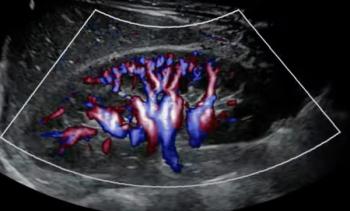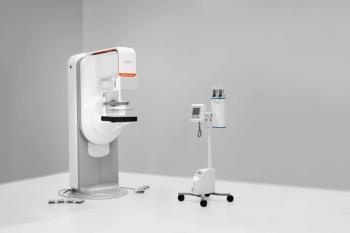
Iterative Reconstruction Reduces Pediatric Chest CT Dose
Study examines ASIR effect on normal and overweight children who underwent chest CT.
The use of a low-dose computed tomography (CT) protocol with 50% adaptive statistical iterative reconstruction (ASIR) resulted in a greater than 57% radiation dose reduction in pediatric chest CT examinations of both normal and overweight children, according to the results of a
The study, led by Mi-Jung Lee MD, PhD, assistant professor of radiology at Severance Children's Hospital, Yonsei University College of Medicine, also found that this dose reduction occurred without a significant loss of image quality.
“In both normal weight and overweight children, the ASIR technique is associated with a greater than 57% mean dose reduction, without significantly impacting diagnostic image quality in pediatric chest CT examinations,” Lee told Diagnostic Imaging. “However, CT scans in overweight children may have a greater noise level, even when using the ASIR technique.”
Lee and colleagues performed this study to confirm the feasibility of radiation dose reduction during chest CT using iterative reconstruction technique in children in consideration with the effect of body mass index or weight, which also can affect image quality.
They retrospectively reviewed 40 pediatric chest CT exams and compared radiation dose and imaging quality, including noise. There were eight overweight children in the ASIR group and seven in the control group.
Results showed that patients who underwent CT with ASIR had a significant (62.3%) radiation dose reduction compared with the control group, with an average size specific dose estimate of 5.5 mGy compared with 14.6 mGy (P<0.001).
Looking at estimated effective doses, there was a 57.4% dose reduction for children in the ASIR group when considering the estimated effective dose of 2.0 mSv compared with 4.7 mSv (P<0.001).
When analyzing objective image quality, the study showed no significant difference in image noise in the aorta between the two groups. However, image noise in the paraspinal muscle of the ASIR group was significantly higher (P<0.001), especially in overweight children. When examining subjective image quality, the reviewers rated only one ASIR scan as “diagnostically suboptimal” and rated none as unacceptable.
The researchers noted that the three image reviewers in the study “did not generally agree on subjective image quality, including noise, sharpness, artifacts and diagnostic acceptability” adding that this lack of agreement is a limitation to the study results.
In addition, Lee and colleagues noted that their sample of overweight children was too small to draw conclusions and mentioned that additional studies including a larger number of overweight or obese individuals will be needed.
Newsletter
Stay at the forefront of radiology with the Diagnostic Imaging newsletter, delivering the latest news, clinical insights, and imaging advancements for today’s radiologists.




























